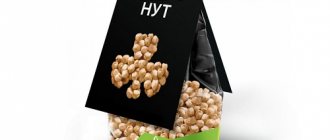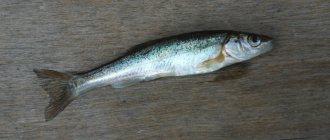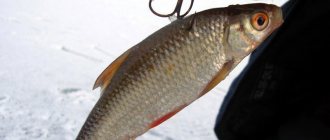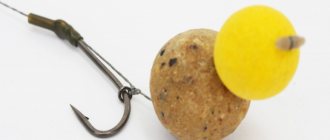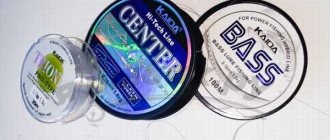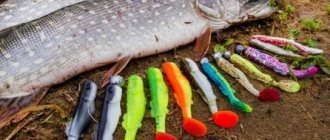There has long been a strong opinion that baits of plant origin are predominantly summer baits. Arguments in favor of this opinion are always given that in the cold water of winter and spring, fish require much more vitality, and therefore calories, to overcome difficulties with low water temperatures. This all corresponds to the theoretical calculations of specialists. Nevertheless, even in cold water, plant baits often outperform animal baits in terms of effectiveness. This is probably due to the habit of fish coming to places near villages where grain products and grains get into the water.
Vegetable baits have an amazing feature , which, although not an absolute pattern, still often manifests itself even on small rivers. This is the ability to lure large fish where, it would seem, there cannot be any - on the most unsightly-looking river, more like a stream. Often a real discovery is the capture of large roach here, which can compete with the Volga specimens. And this is possible thanks to plant attachments. If at the same time small roach and perch are caught on maggots and worms, then from time to time roaches weighing half a kilo are pecked on dough and corn.
Peas and peas
Steamed peas can be called the earliest bait in the open water season. This attachment is successfully used when ide travels along small rivers to spawn. And the ide begins to rise to the upper reaches earlier than other fish from the carp family. It is on peas that most large ides are caught. But steamed peas are made from unshelled grains, and in our time it is not always possible to purchase such peas. Therefore, fishermen found a replacement in the form of canned green peas. But if possible, it is better to have both attachments in stock. You can cook peas this way. Soak it overnight in water, and in the morning steam under the lid for an hour. If the peas are fresh, they will “reach” during this time and will be moderately soft. Old peas can be soaked and evaporated for a long time, but it will not produce a good bait.
How to store live bait?
It is very important to keep live baits attractive throughout your fishing trip. This is especially true on hot days, when everything is literally boiled and fried. Firstly, the fisherman must have a supply of boxes for these baits. For example, like this:
Larger ones are suitable for storing worms, and smaller ones for maggots and bloodworms. It is better to store bloodworms in such a foam bloodworm container. With holes at the top. It opens and closes conveniently. A piece of foam rubber with water is placed inside it and bloodworms are placed.
In general, the principle of storing baits is simple: we create a natural environment for insects, with sufficient humidity and oxygen supply. For example, a worm lives in water, so we put it in a jar of water and put it in the shade. Under no circumstances should we allow maggots into the water. A dry jar is suitable for it, even without anything. You can sprinkle a little bait or crackers. We store the mole cricket or grasshopper in a dry jar with holes in the lid.
If we fish in the heat, it is better to place the main part of the baits in a thermal bag with a battery. This way you will keep them throughout your fishing trip. It is better to store worms in moist humus or soil from a compost pit. The main thing is that a swamp does not form in the box, in which the worms can die. When fishing, it is useful to cover boxes with bait with a damp cloth. We periodically moisten the cloth in water, thus creating a comfortable environment for worms, maggots and bloodworms.
If after fishing you have a lot of maggots and worms left, then you don’t have to throw them away. Maggot can be stored in the refrigerator for weeks, falling into a kind of suspended animation. We store the worms in a small bucket of soil, periodically adding potato and vegetable peelings to it.
crust of bread
There is probably no more effective bait for ide in the spring than the usual crust of wheat bread. It cannot be said that the effectiveness of this bait is the same on all rivers, but on some of them, often near cities and villages, it is with this bait that the largest ides and often bream are caught. But the time for bream comes a little later, closer to summer. And then this attachment breaks all records for catchability. I remember that in one morning more than two dozen large bream were caught on a donk with a crust of bread. And this is almost in the city center, next to the city beach!..
But, despite its high efficiency, this nozzle has a significant drawback. It is quickly washed away by jets of water, especially in fast currents. Even without a bite, it is necessary from time to time to take the tackle out of the water and re-attach the crust of bread. However, during a good bite, these troubles are a mere trifle compared to successful and exciting fishing.
This nozzle is prepared as follows:
From fresh wheat bread, cut a slice with a crust about a centimeter thick, maybe a little more. The crust is then cut into cubes with sides of the same size. Place a cube of bread crust as follows. First, they pierce the crust with a hook, then turn the hook and bring its tip through the pulp back to the hard part of the peel, but without piercing it through. No flavoring required. This bait perfectly attracts fish with its natural appearance and smell. The bread would be of high quality and fresh.
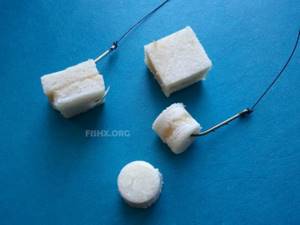
Porridge
Kashi are the favorite baits of Kursk fishermen. When preparing any porridge as a fishing bait, add half a teaspoon of salt to the water or milk in which it is cooked, and at the end of cooking add half a teaspoon of honey or sugar. Before taking the bait, the fish tastes it and takes salty or sweetened porridge much more readily than fresh porridge. It is better to cook porridge in an enamel pan, but not in an aluminum pan, and certainly not in a galvanized one.
Semolina
A glass of milk diluted half with water is poured into the pan. Add a teaspoon of sunflower oil and vanilla on the tip of a knife. Bring to a boil and gradually pour in a quarter cup of semolina, stirring continuously. Cook the porridge over low heat until thickened. After cooling, mix with dry semolina and knead until a viscous dough that does not stick to your hands is formed. This bait is also bait, since semolina grains separating from it attract fish from afar. This attachment can be colored with lipstick, food coloring or beetroot infusion.
Read! Catching grass carp on reeds
Millet porridge
For a glass of washed millet, take two glasses of water. Cook over low heat, stirring constantly so that the porridge does not burn. When the cereal is cooked, pour three tablespoons of milk and a spoonful of sunflower oil into it and continue to cook until thickened. Then the porridge is kneaded in a saucepan and put in the oven for about an hour. After removing from the oven and cooling, knead the porridge to a viscous thick mass and make balls of the required size, depending on the size of the hook. If you roll these balls in dry aquarium food while fishing, the bait will attract fish not only by the smell, but also by the particles of food that separate from it.
Pea porridge
Pea porridge is prepared mixed with semolina. Half a glass of peas is poured with two to three glasses of water and left to swell for 3-4 hours. Cook over low heat until creamy consistency. If necessary, you can add boiling water. Then the mass is rubbed through a fine-mesh sieve so that no undercooked grains or pea skins remain. The resulting liquid puree is placed on the fire and, when it begins to “puff”, gradually add semolina, stirring vigorously with a spoon until it becomes a stiff dough. The ratio of pureed peas and semolina is approximately 1:1. The mixture is placed on a clean table and stirred until smooth. Here it is important to observe the dosage of semolina. If you pour in the cereal, the porridge will become hard after cooling and unattractive to fish. If you don’t get enough sleep, it becomes liquid, and such a bait often flies off the hook already during casting. These shortcomings can be corrected as follows. Dry semolina is added to the liquid porridge and kneaded to the consistency of soft plasticine. If the porridge is too hard, it is kneaded in water from the reservoir where they are going to fish. There is no need to add odorous substances, as they will “clog” the smell of peas, which is easily captured by fish.
Read! Catching chub with a cockchafer
Corn porridge
Corn porridge is prepared in the same way as pea porridge, in combination with semolina. Only instead of peas they cook corn grits, and there is no need to rub it through a sieve. But it is necessary to boil it completely, otherwise at the moment of hooking the fish may not be hooked, because the hook tip has stuck into an uncooked grain. If the porridge burns a little, it doesn’t matter. As practice has shown, fish will also take slightly burnt porridge.
Barley porridge
Pour two glasses of water into the pan, stir in a spoonful of sugar, add salt and bring to a boil. Then, to obtain stickiness, add a couple of pinches of semolina and stir continuously for 5-10 minutes. After this, add a glass of barley grits and cook over low heat until tender. After cooling, knead the porridge until smooth. You can add a little crushed cake or sunflower oil.
"Signature porridge"
Crushed “Strawberry” or “Yubileinoe” cookies are added to the corn porridge with a slight smell of honey in a 1:1 ratio. Instead of corn porridge, you can use barley porridge. In the Kurchatov Reservoir and in other reservoirs of the Kursk region, carp, crucian carp, bream, large silver bream and rudd are very successfully caught with this bait. A great variety of such “signature” dishes can be invented.
Pearl barley
A glass of cereal is poured into a saucepan with water and cooked over low heat, stirring occasionally. You need to make sure that the cereal does not burn. This is how readiness is checked. Take a few grains and crush them; there should be no dry, uncooked mass left inside. Then the cereal is washed, dried and sprinkled with breadcrumbs. After this, mix. The crackers stick to the cereal, forming shaggy grains. From cereals prepared in this way, pieces of crackers fall off in the water, attracting fish and causing a more intense bite. You can make pearl barley even easier. In the evening, pour a handful of cereal into a thermos, pour boiling water over it and close with a stopper. In the morning the pearl barley will be ready. It is shaken out of the thermos, washed and slightly dried. You can add breadcrumbs or two or three drops of flaxseed oil.
You should only use fresh plant baits prepared the day before going to the pond, or even better, directly on the pond. Soured ones only scare away the fish. It will be easier to keep the attachment fresh if, when preparing porridge or steamed grains, add aspirin to the water at the rate of one tablet per liter of water.
Bread crumb
This is the most common attachment, known since the time of Aksakov. Moreover, the crumb can be used rolled from rye and wheat bread. It’s just that every type of bread has its fans. Often the largest roach is caught on rye crumb. Sometimes, more often closer to summer, roaches are more attracted to white bread. The same thing happens with the taste preferences of bream. The crumb of rye bread smells very tasty and it’s not for nothing that fish are so interested in it.

Types of famous baits for successful crucian carp fishing
To catch crucian carp, experienced fishermen use various baits, and almost everyone has their own cooking secret. The most popular are:
- The bread crumb, pressed into pieces, attaches well to the hook. Crucian carp does not always take a ball crushed in the hand, and when it gets into the water it becomes slimy in consistency. And by hooking, you can completely lose the fish.
- Barley is soaked in water for 10–12 hours per day. The swollen grains are placed in the oven and cooked over low heat. Soft pearl barley should not burst.
- Semolina is cooked to a thick, homogeneous mass. Place 2-3 crushed cookies into the cooled porridge, cut into squares and roll in attractants.
- Corn is very popular in southern latitudes, in reservoirs of rich feeding of fish.
- Processed cheese is used together with rye bread in a ratio of 1 part cheese to 2 parts bread. You can add honey or garlic juice to the mixture.
- Canned peas are planted after rolling in attractants before stringing a worm or maggot.
- Canned corn, like peas, is used in reservoirs with good bait.
- Steamed pulp. It is placed on the hook, covering the sting. The cake sprinkled with vanilla sugar is rolled in attractants.
Often, crucian carp are very selective in their choice of food. For example, in the morning it bites well on a worm, but in the evening you can’t catch it because it switched to pearl barley. This behavior is caused by a difference in oxygen content in the water. When its concentration increases, the fish are more interested in animal food, and when it decreases, on the contrary, in plant bait.
Semolina chatter
This is also an excellent bait, which is successfully used from early spring until autumn. Unlike hard-boiled semolina, this bait is more delicate and soft. Therefore, it often attracts fish more than a cool decoy, which holds well in the current and is therefore more used in a strong current. At moderate currents, the talker will be more effective. It is prepared like this. Pour a tablespoon of semolina into a container, add water and stir. After some time, add dry semolina and stir again. And so on several times until the mass begins to stretch out following the spoon. In this form, it can be packaged in a toothpaste tube or in a small jar with a tight lid. When fishing, the chatterbox is wound around the hook, like a thread, with a twig or stick brought along with the bait. It is better not to touch the semolina with your hands.
I recommend to read:
How to make semolina more effective
Cake
The cake can be cut into cubes, tied crosswise with black thread and threaded with a hook under the thread. The size of the cube and hook depends on the size of the fish.
Or boil it over low heat, knead it, add a little flour and roll into balls. This bait is perfect for catching Carp or large Carp.
3 ways to improve your fish bite!
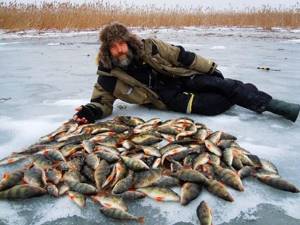
Over 15 years of active fishing, I have found many ways to improve the bite, and here are the most effective:
1. Bite activator . This pheromone additive attracts fish most strongly in cold and warm water. The Fish Hungry bite activator has proven itself to be excellent - Read more…
2. Tackle with increased sensitivity . You should first familiarize yourself with the features of using a particular type.
3. Pheromone baits . They attract the attention of fish, stimulate hunger and cause a schooling reflex, which allows you to collect a lot of fish in one place.
You can get the rest of the secrets of successful fishing for free by reading my other materials on the site.
3 ways to improve your fish bite!
Over 15 years of active fishing, I have found many ways to improve the bite, and here are the most effective:
1. Bite activator . This pheromone additive attracts fish most strongly in cold and warm water. The Fish Hungry bite activator has proven itself to be excellent - Read more…
2. Tackle with increased sensitivity . You should first familiarize yourself with the features of using a particular type.
3. Pheromone baits . They attract the attention of fish, stimulate hunger and cause a schooling reflex, which allows you to collect a lot of fish in one place.
You can get the rest of the secrets of successful fishing for free by reading my other materials on the site.
Corn "Bonduelle"
This plant bait won its place among other baits initially thanks to carp fishing and carp fishing in the lower reaches of the Volga. There, corn has long been used as bait. And now in central Russia, corn has become one of the most popular baits on carp ponds, but not only. As mentioned above, our roach and even bream, not to mention crucian carp, suddenly fell in love with corn. True, we don’t cook corn here, but simply buy it in canned form, since it is difficult to cook the delicate bait from fodder corn, which we grew after Khrushchev. And Bonduelle corn is distinguished by its softness, juiciness and tenderness, which immediately attracted domestic fish. In addition, this corn goes well with red colored maggots. This “sandwich” often attracts bream.
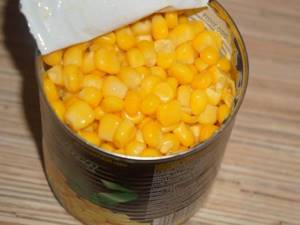
Its use can bring success in early spring along with canned peas. True, fish are not always and not everywhere caught well using canned corn. This must be tested empirically for each specific reservoir, and at different times of the year, since the most active bite for corn occurs in some places at the beginning or end of summer. And in other periods, fishing is no different from the usual standards, when fish are caught well with traditional bait - worms and maggots.
Catching bloodworms while fishing
Let us dwell separately on such an attachment as a bloodworm. It is known that these red larvae require special attention in terms of storage. The story with bloodworms is the same as with the worm. When the bite is weak and the fish are not very active, they prefer bloodworms from the local reservoir. You may have fat red bloodworms, but the fish will not eat them for some reason. But as soon as you select several larvae from a local reservoir and place them on a hook, you will get, if not confident, then at least some bites.
How to wash bloodworms without a special tool? If the reservoir is “live” with a large food supply, then it is enough to scoop up a piece of swamp at the bottom with a shovel and wash it in small parts in a stocking or sock. Take a ball of swamp and place it in a stocking or piece of tulle and rinse it in water. After this, check to see if there are any bloodworms left inside. The process may take 30-40 minutes, but you will catch local bloodworms, which will catch bream, roach, silver bream and other white fish better than store-bought ones from an unknown body of water.
Bloodworms are the main bait for winter fishing and when fishing in cold water in spring and autumn.
Wheat dough
Oddly enough, but a typical summer bait - dough made from wheat flour - also works quite effectively in spring fishing from ice. And not only for spring fishing. On some suburban rivers, roaches bite on the dough all winter. Moreover, mostly larger specimens are caught than bloodworms. The dough can be called the same simple and effective attachment as an ordinary lump of rye or wheat bread. The only difference is that you have to make the dough yourself, but it is a very simple matter. You just need to add flour to warm water, simultaneously stirring and kneading the dough as it turns from sticky slurry into dough. When fishing, the dough is often baited using the principle of semolina, that is, without touching it with your hands, it is wound with a stick onto a hook. What does this give? With this method, there is no smell from the fisherman’s hands or the smell of fish caught earlier on the bait. And fish release not only pheromones that attract a female or male, but also the smells of negative emotions, that is, fear.
I recommend to read:
Fishing dough
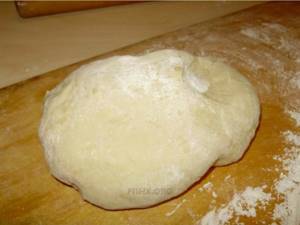
Live baits for fishing
The most popular live baits among anglers are worms, bloodworms, maggots and dragonfly larvae, caddis flies, leeches, mole crickets, etc. However, worms and bloodworms are not always suitable for fishing in a particular body of water. Maggot stands apart as the most versatile live bait.
There is an opinion that fish prefer the food that is located within the reservoir or around it. Very often, local fishermen easily catch visiting fishermen, from whom all the baits were purchased in the store.
It happens that fish bite very sluggishly on delicious California worms or large bloodworms, but as soon as you put a leech found near the shore on the hook, confident bites follow.
However, a leech may be inconspicuous and not so appetizing, but the fish clearly prefers it. What does this mean? This suggests that if the bite is weak or completely absent, you should not fold your arms and wait for the bite. You need to change attachments and look for more suitable ones. Moreover, near the reservoir you can find caddis flies, dragonfly larvae, and the same leech. It is clear that in this case it is easier to start the meal in an alcoholic format, telling them that today is not a day for fishing. But in this case, the fishing will end before it really begins.
Pearl barley
Pearl barley is also a very effective bait, especially for pond crucian carp and river roach. It would seem that the rubber grains of the boring porridge in the army, which they call shot, are nevertheless very attractive to fish. The red-eyed roach sometimes bites especially well on pearl barley. It is important to cook pearl barley so that it is not very tight and hard, but also does not fall apart into crumbs. Usually the finished pearl barley is made to look like glass. And the water in which pearl barley was boiled becomes cloudy. Some fishermen leave pearl barley in a thermos with boiling water overnight and by morning the barley for bait is usually ready. True, then you have to wash the thermos for quite a long time from the pearl barley steamed in it.

The difference between the concepts of bait and bait
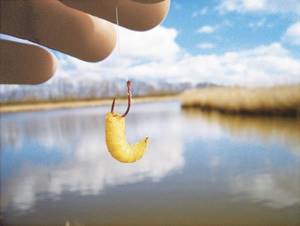
The world around us is developing, and everyone is more and more sensitive to literacy, so it would not hurt to understand these concepts for yourself.
So, the bait consists of a product of animal origin (maggots, bloodworms, worms, etc.). The attachment, accordingly, is of plant origin (various cereals, corn kernels, etc.). By and large, if these concepts are confused, then this is not a mistake, but understanding how they differ emphasizes the fisherman’s literacy.
For example, in professional sport fishing, substitution of these concepts is not encouraged.
Animal nozzles
Animal baits are known to everyone - these are worms, maggots, bloodworms, caddis flies, much less often, in exceptional situations they can be beetles, beetle larvae (for example, the larva of the cockchafer), mole crickets and the like.
Live fishing bait is a natural food for any fish. Moreover, some of the fish’s preferences are easily explained. For example, a worm is very popular in the spring, because when the snow melts, the worm is washed out of the soil, falls into the water and the fish actively eat it. Also, bloodworms and caddisflies are natural food that lives in a reservoir, and fish eat them with pleasure. But there are also baits for which it is not clear why fish love them. Nevertheless, they have become firmly entrenched in the fisherman’s consciousness and very few fishing trips can be done without them. This is a maggot, it does not live in water, it is not familiar to the fish, but it loves it very much. Apparently, due to some similarity with other larvae living in water. Baits such as the cockchafer, for example, are excellent for catching chub. Here you can even name baits - exceptions that help the float fisherman or bottom fisher to catch predatory fish - this is fish meat, frog or live fry.
Animal baits have advantages that help the angler catch. For example, the fact that they contain proteins (proteins). This is especially important when fishing in cold water when the fish need nutrients. Also, animal baits are mobile and, in addition to aroma and color, they stand out at the fishing point with their animation (play), attracting fish with vibrations.
It must be admitted that for a beginner, the most effective baits will be a worm, bloodworms and maggots. These baits can be used to catch 90% of peaceful fish species. Naturally, all these fishing attachments can be obtained with your own hands or bought in a store.
Boilies as bait when fishing for crucian carp
Many amateur fishermen have recently preferred boilies to all other baits. And according to them, in most cases the result exceeds expectations.
What are boilies? These are round balls of fairly dense consistency, made from various cereals. Their diameter can vary from a pea to several centimeters. It depends on the size of the fish being caught. To catch crucian carp up to 2 kg, it is enough to use boilies measuring 8–10 mm. Otherwise, the fish will not be able to swallow the bait and there will be many empty bites.
Due to their density, boilies are attached to a special thread, which is attached next to the hook. This equipment is called hairline.
Boilies have a number of advantages, which are as follows:
- They have a fairly long shelf life.
- They are very easy to store. Moreover, the storage temperature does not matter much.
- When using boilies, the likelihood of catching small fish is very small. For her, boilies are simply not interesting.
- If the fish bites, then there are practically no idle bites.
- They keep their round shape in water for a long time and do not crumble into small pieces.
- Additionally, they attract crucian carp with their color and aroma.
In addition, boilies can have different buoyancy and purpose - bait and dust, sinking or with neutral buoyancy.
When fishing for crucian carp on a hard bottom, sinking boilies are used, and in the presence of silt, neutrally buoyant or floating boilies are used. We must not forget about bait. In this case, you need to use dusting and bait boilies. Live maggot larvae, boiled corn, peas, and wheat would also be useful.
Popular store-bought boilies for catching crucian carp
Nowadays, buying boilies in a store is not a problem for fishermen. On the shelves they are presented in a large number of different colors and with all possible aromas. The manufacturer is not particularly important, but boilies from the following companies are most popular among fishermen:
- Richworth. The main distinguishing characteristic of this company’s boilies is that they are made from natural ingredients that do not pollute the reservoir with foreign impurities. In addition, all Richworth products comply with European standards.
- CC Moore. According to fishermen, CC Moore boilies are best suited for attracting fish, as they contain substances with a strong natural aroma.
- FineFishing. The boilies made by this company are famous for the fact that they are without preservatives.
Preparing boilies with your own hands
It won’t be difficult to make boilies yourself. Making medium-sized boilies for catching crucian carp at home is, first of all, distinguished by the quality of the product. Every fisherman knows this, combining the composition of the mixture at his own discretion.
This makes it possible to select the most delicious components for fish, based on your own experience. The composition includes all kinds of flour with additional ingredients and the addition of salt as a preservative (coarse grinding).
The ingredients are ground to a powder and flavorings are added, such as hemp, linseed or sunflower oil, dried insects and crustaceans. By tinting the bait with food coloring in bright yellow-red colors, they make it more visible to fish in dark water.
How well boilies will float depends on the type and duration of their heat treatment. If you need to make heavy boilies, then the finished dry mixture is soaked in water and mixed, like dough, very thickly. Then form into sausages of suitable thickness and cut them into 6–8 mm lengths. The resulting pieces are rolled into balls of the required size.
Boilies in their raw form are dried on a clean towel. After a couple of hours, the balls are sent to a sieve, lowered into a pan of boiling water. In this way they are boiled until they float. Then they acquire a hard crust. After taking them out and laying them out on a towel, dry each one separately from each other.
If boilies need to float in water, they should not be boiled. Requires hot microwave treatment to remove moisture. It is necessary to ensure that they do not burn: fish are very sensitive to taste deviations.
To prevent this from happening, you need to turn on the microwave at full power only for a couple of minutes, taking approximately the same breaks, opening the door. The procedure should be continued until the moisture has completely evaporated, the balls should become hard. After this procedure, the boilies are cooled again and placed in the refrigerator. This is how they become light and remain afloat when they fall into the water.
Homemade feeding boilies are prepared by freezing the balls. Frozen bait dissolves in water only after some time.
From all of the above, it becomes clear that the attachment for catching crucian carp is of great importance and in order to always be with a catch, it is worth trying out all sorts of options.
